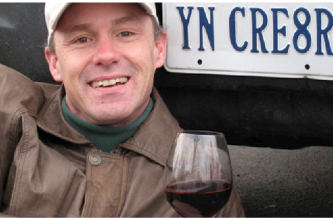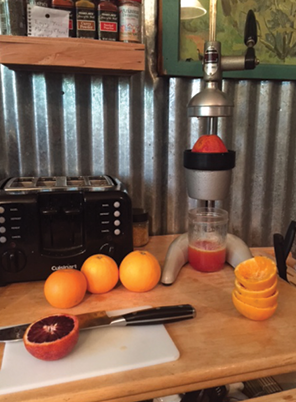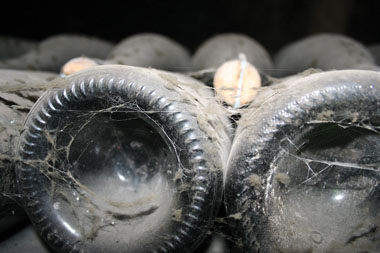To make the best wine, you need the best grapes. And that requires a lot of work in your hobby vineyard. Get tips on what to look for and when to look for it so you stay one step ahead of potential problems that could derail your crop.
 Ed Kwiek established his own cold-climate home vineyard in 2000 where he grows cold-hardy grape cultivars bred by Cornell University. In 2008, he began his own
Ed Kwiek established his own cold-climate home vineyard in 2000 where he grows cold-hardy grape cultivars bred by Cornell University. In 2008, he began his own
consulting firm, Woods Wine LLC, which helps winemakers in the Northeastern US install vineyards.
Walking the vineyard brings me joy, so I do it very often. I occasionally walk the vineyard during the winter because I enjoy looking at the condition of the vines and assessing the damage that the cold weather may have done. You may want to perform bud mortality assessment or you may just want to look over the vines and determine how much “new wood” you will have to work with during spring pruning. Just before the growing season, you will be pruning and spraying the vineyard floor with herbicides. From an assessment standpoint, I recommend walking the vineyard at least weekly during the growing season. There is much to do as the vines rapidly go through the various stages of maturity; you need to be an attentive grower to be successful.
When you are out scouting, bring your field guide to identify problems, a magnifying glass to get a good look at things, and tape measure to determine the growth stage of the shoots so you know what to spray. Be vigilant and plan on a pesticide application every 7–14 days during the period of the growing season between 1-inch (2.5-cm) shoots and veraison.
You can make your vineyard custodial responsibilities a lot easier by using a few very good resources. For scouting, I highly recommend A Pocket Guide for Grape IPM Scouting in the North Central and Eastern United States, written by Isaacs, Schilder, Zabadal, and Weigle. It is an illustrated guide to identify insect and mite pests, diseases, and physiological/chemical disorders in the vineyard. Another set of excellent tools are the spray guides available from VineSmith, Inc. They provide information on fungicides, insecticides, and herbicides that will show you at a glance the different vulnerabilities of the vines at the various growing stages, and the recommended preventions.
The signs of stress that I look for are those caused by lack of sufficient water (especially in young vines), the presence of disease, and insect damage. You need to ensure your young vines get plenty of water to get a good foothold, so if the tendrils are drooping, you better get some water to those young vines. Established vines have deep roots and tend to make it through dry periods in the Northeast.
Canopy management is another important responsibility to check in on. The canopy needs to be kept fairly open and accessible for the following three reasons: 1) So that a breeze can get in to dry off dew and rain quickly to help prevent mildew formation, 2) to allow pesticide applications to get to the inside of the canopy and to the fruit, and 3) to allow the sunshine to get to the fruit for ripening and to let the sun get to all areas of the vine for photosynthesis. The goal is to allow “dappled sunlight” into the canopy.
A common mistake is to think because the canopy and grapes look healthy, spraying isn’t necessary. Prevention is extremely important because in many cases, once you see the insect or disease damage, it is too late to treat the problem. Another common mistake is to over-crop the vines, which may weaken them as they approach a potentially stressful winter.
 Tom Payette, a premier hands-on and analytical winemaking consultant, serves clients throughout the Eastern U.S. and internationally. Tom has 25 well-rounded years of experience in still and sparkling wine production in Virginia along with seven years of experience in ultra-premium Bordeaux varietal wine production in Napa, California and has his Food Science Degree from Virginia Tech.
Tom Payette, a premier hands-on and analytical winemaking consultant, serves clients throughout the Eastern U.S. and internationally. Tom has 25 well-rounded years of experience in still and sparkling wine production in Virginia along with seven years of experience in ultra-premium Bordeaux varietal wine production in Napa, California and has his Food Science Degree from Virginia Tech.
Walking the vineyard is very important to start to see issues before they become a disaster. I recommend walking, or working, the hobby vineyard every other day, weather permitting. This is more for the growing season to pick up on flea beetles, phemopsis, mites, Cane Girdler, Grape Berry Moths, shoot thin, hedging, etc. You can take the winter months off for the most part thank heavens. Once you look at the same vine every other day you will start to zero in on the subtle signs it may be giving you. Just like a family member or work associate: You can start to read when something else may be affecting them and then slightly change your approach, by just a small nudge, and then the situation comes full circle and the vines start to smile again!
There is a plethora of other items to also look for. How did bloom do? Fruit set? Too many clusters on a shoot? Clusters touching? Too much western sun? Too little eastern morning sun? Uneven ripening? Unfruitful buds? Weather, discoloring of leaves, leaf roll, nutrient deficiencies, trellis issues, standing water, bird damage, bees, fruit flies, early skin breakdown . . . it’s never ending.
What you look for should change depending on the history of the vine. Different areas start to develop patterns both good and bad. One can almost know for certain what conditions the fruit may not be able to withstand. Young vines often ripen fruit earlier than older vines. Leaf pulling reactions, avoiding sunburn, color development, vine decline and then tasting to know “we’re there.” Tasting and mentally being able to monitor flavor/aroma development is exciting when you start to “get it.” Also, understand the timeliness that things need to get done and don’t rush your wines to the bottle.
Drink up and walk those vines. Take a glass of wine and a friend with you!
 Ed Kwiek established his own cold-climate home vineyard in 2000 where he grows cold-hardy grape cultivars bred by Cornell University. In 2008, he began his own
Ed Kwiek established his own cold-climate home vineyard in 2000 where he grows cold-hardy grape cultivars bred by Cornell University. In 2008, he began his own
 Tom Payette, a premier hands-on and analytical winemaking consultant, serves clients throughout the Eastern U.S. and internationally. Tom has 25 well-rounded years of experience in still and sparkling wine production in Virginia along with seven years of experience in ultra-premium Bordeaux varietal wine production in Napa, California and has his Food Science Degree from Virginia Tech.
Tom Payette, a premier hands-on and analytical winemaking consultant, serves clients throughout the Eastern U.S. and internationally. Tom has 25 well-rounded years of experience in still and sparkling wine production in Virginia along with seven years of experience in ultra-premium Bordeaux varietal wine production in Napa, California and has his Food Science Degree from Virginia Tech.





